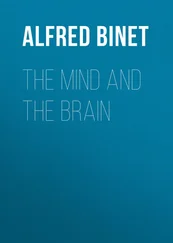Each view in its extreme form is in fact rather absurd. As an analogy, suppose you are watching the program Baywatch on television. Where is Baywatch localized? Is it in the phosphor glowing on the TV screen or in the dancing electrons inside the cathode-ray tube? Is it in the electromagnetic waves being transmitted through air? Or is it on the celluloid film or video tape in the studio from which the show is being transmitted?
Or maybe it’s in the camera that’s looking at the actors in the scene?
Most people recognize right away that this is a meaningless question. You might be tempted to conclude therefore that Baywatch is not localized (there is no Baywatch “module”) in any one place — that it permeates the whole universe — but that, too, is absurd. For we know it is not localized on the moon or in my pet cat or in the chair I’m sitting on (even though some of the electromagnetic waves may reach these locations). Clearly the phosphor, the cathode-ray tube, the electromagnetic waves and the celluloid or tape are all much more directly involved in this scenario we call Baywatch than is the moon, a chair or my cat.
This example illustrates that once you understand what a television program really is, the question “Is it localized or not localized?” recedes into the background, replaced with the question “How does it work?” But it’s also clear that looking at the cathode-ray tube and electron gun may eventually give you hints about how the television set works and picks up the Baywatch program as it is aired, whereas examining the chair you are sitting on never will. So localization is not a bad place to start, so long as we avoid the pitfall of thinking that it holds all the answers.
So it is with many of the currently debated issues concerning brain function. Is language localized? Is color vision? Laughter? Once we understand these functions better, the question of “where” becomes less important than the question of “how”. As it now stands, a wealth of empirical evidence supports the idea that there are indeed specialized parts or modules of the brain for various mental capacities. But the real secret to understanding the brain lies not only in unraveling the structure and function of each module but in discovering how they interact with each other to generate the whole spectrum of abilities that we call human nature.
Here is where the patients with bizarre neurological conditions come into the picture. Like the anomalous behavior of the dog that did not bark when the crime was being committed, providing Sherlock Holmes with a clue as to who might have entered the house on the night of the murder, the odd behavior of these patients can help us solve the mystery of how various parts of the brain create a useful representation of the external world and generate the illusion of a “self” that endures in space and time.
•
To help you get a feel for this way of doing science, consider these colorful cases — and the lessons drawn from them — taken from the older neurological literature.
More than fifty years ago a middle-aged woman walked into the clinic of Kurt Goldstein, a world-renowned neurologist with keen diagnostic skills. The woman appeared normal and conversed fluently; indeed, nothing was obviously wrong with her. But she had one extraordinary complaint — every now and then her left hand would fly up to her throat and try to strangle her. She often had to use her right hand to wrestle the left hand under control, pushing it down to her side — much like Peter Sellers portraying Dr. Strangelove. She sometimes even had to sit on the murderous hand, so intent was it on trying to end her life.
Not surprisingly, the woman’s primary physician decided she was mentally disturbed or hysterical and sent her to several psychiatrists for treatment. When they couldn’t help, she was dispatched to Dr. Goldstein, who had a reputation for diagnosing difficult cases. After Goldstein examined her, he established to his satisfaction that she was not psychotic, mentally disturbed or hysterical. She had no obvious neurological deficits such as paralysis or exaggerated reflexes. But he soon came up with an explanation for her behavior: Like you and me, the woman had two cerebral hemispheres, each of which is specialized for different mental capacities and controls movements on the opposite side of the body. The two hemispheres are connected by a band of fibers called the corpus callosum that allows the two sides to communicate and stay “in sync”. But unlike most of ours, this woman’s right hemisphere (which controlled her left hand) seemed to have some latent suicidal tendencies — a genuine urge to kill herself. Initially these urges may have been held in check by “brakes” — inhibitory messages sent across the corpus callosum from the more rational left hemisphere. But if she had suffered, as Goldstein surmised, damage to the corpus callosum as the result of a stroke, that inhibition would be removed. The right side of her brain and its murderous left hand were now free to attempt to strangle her.
This explanation is not as far-fetched as it seems, since it’s been well known for some time that the right hemisphere tends to be more emotionally volatile than the left. Patients who have a stroke in the left brain are often anxious, depressed or worried about their prospects for recovery. The reason seems to be that with the left brain injured, their right brain takes over and frets about everything. In contrast, people who suffer damage to the right hemisphere tend to be blissfully indifferent to their own predicament. The left hemisphere just doesn’t get all that upset. (More on this in Chapter 7.)
When Goldstein arrived at his diagnosis, it must have seemed like science fiction. But not long after that office visit, the woman died suddenly, probably from a second stroke (no, not from strangling herself). An autopsy confirmed Goldstein’s suspicions: Prior to her Strangelovean behavior, she had suffered a massive stroke in her corpus callosum, so that the left side of her brain could not “talk to” nor exert its usual control over the right side. Goldstein had unmasked the dual nature of brain function, showing that the two hemispheres are indeed specialized for different tasks.
Consider next the simple act of smiling, something we all do every day in social situations. You see a good friend and you grin. But what happens when that friend aims a camera at your face and asks you to smile on command? Instead of a natural expression, you produce a hideous grimace. Paradoxically, an act that you perform effortlessly dozens of times each day becomes extraordinarily difficult to perform when someone simply asks you to do it. You might think it’s because of embarrassment. But that can’t be the answer because if you walk over to any mirror and try smiling, I assure you that the same grimace will appear.
The reason these two kinds of smiles differ is that different brain regions handle them, and only one of them contains a specialized “smile circuit”. A spontaneous smile is produced by the basal ganglia, clusters of cells found between the brain’s higher cortex (where thinking and planning take place) and the evolutionarily older thalamus. When you encounter a friendly face, the visual message from that face eventually reaches the brain’s emotional center or limbic system and is subsequently relayed to the basal ganglia, which orchestrate the sequences of facial muscle activity needed for producing a natural smile. When this circuit is activated, your smile is genuine. The entire cascade of events, once set in motion, happens in a fraction of a second without the thinking parts of your cortex ever being involved.
But what happens when someone asks you to smile while taking your photograph? The verbal instruction from the photographer is received and understood by the higher thinking centers in the brain, including the auditory cortex and language centers. From there it is relayed to the motor cortex in the front of the brain, which specializes in producing voluntary skilled movements, like playing a piano or combing your hair.
Читать дальше












